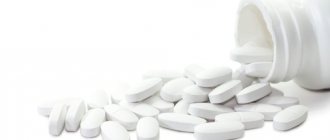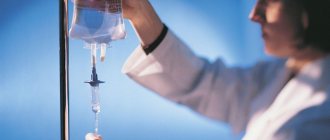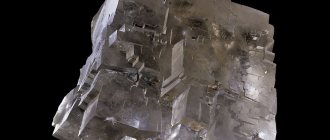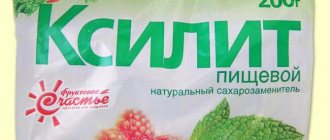Ephedrine is a substance that is a psychoactive alkaloid found naturally in the plant called ephedra.
What is ephedra? Where else is ephedrine found? This is a perennial shrub, a relict plant, containing, in addition to the poisonous alkaloid, pseudoephedrine and N-methylephedrine. Ephedra or Ephedra two-spikelet grows in steppes and semi-deserts, in Kazakhstan, the Caucasus, southern Europe, Central Asia and Siberia, as well as in Transbaikalia. Ephedra extract – what is it? What is ephedrine used for?
Ephedra and ephedrine in pharmacology
The herb ephedra has long been used in medicine. This medicinal plant is used to treat asthma, hypotension, and pharyngitis. The use of ephedra berries was widespread in China and Japan, and the plant was popular due to its medicinal properties. It stimulates the respiratory center, excites the central nervous system, and increases blood pressure. The extract and fruits of ephedra are used in folk medicine to eliminate inflammation after surgery, intoxication, large blood loss, and injuries.
Analogs
If we consider ephedrine as a plant alkaloid with biological origin, then cocaine is closest in terms of effects on the body and methods of extraction. The drug has a similar mechanism of action and is also an alkaloid.
If we consider drugs that contain ephedrine, then first of all we need to take into account all the drugs that are used against cough, and their active ingredient is ephedrine or pseudoephedrine. Such drugs include:
- Bronholitin;
- Insanovin;
- Theophedrine;
- Bronchitusen;
If we talk about drugs that act in the same way as ephedrine, then these are all drugs that are psychostimulants:
- Cocaine;
- Amphetamine;
- Alpha PVP;
- Siberia;
- Crack;
- Dexamphetamine.
All narcotic analogues cause rapid addiction and lead to death in a relatively quick period of time.
All types of drug addiction
Drug addiction treatment
More details
Female, age, beer
Treatment of alcoholism
More details
Plants containing ephedrine
What other plants contain ephedrine? A large concentration of it is found in plants and shrubs of the ephedra genus, but out of more than 40 species, the alkaloid is contained only in 18. The maximum concentration of the active substance is found in young shoots. The most common types of ephedra are: ephedra horsetail, two-spikelet, single-seeded, and Dahurian ephedra.
Ephedra is a psychostimulant. The psychoactive substance ephedrine (ephedrinum) was synthesized from the plant in 1929, which began to be actively used in medicine for the treatment of bronchial asthma.
Pharmacological group of ephedrine: sympathomimetic agent.
Chemical formula of ephedrine: C10H15NO.
Release form: tablets, powder, ampoules with solution, as well as sprays, syrups and ointments.
What does ephedrine look like?
Why you can’t undergo rehabilitation at home
At home there is no way to provide symptomatic treatment in a timely manner. There is no possibility of daily monitoring of blood counts and checking the patient for drug use.
At home there is a greater chance of relapse, as there is easy access to friends and drug dealers. On an outpatient basis, there is no opportunity to provide psychological support and adequate support in the process of getting rid of addiction.
A house can be reminiscent of times when a person was under the influence of drugs. This will become another trigger in trying to use again.
To qualitatively restore the patient’s personality, you need to work with professionals. Only a few with great willpower and motivation can cope on their own. The rest only talk about getting started, and they themselves use the drug at the first opportunity. Therefore, it is better to treat addiction in a hospital or special institution.
Drug ephedrone
Ephedrine and pseudoephedrine are not drugs, but they are used as precursors for their manufacture. This is the raw material from which the dangerous psychoactive drug ephedrone is made. Ephedrone or methcathinone has many slang names in the drug community: mulka, jef, marcephal. The drug became widespread in our country in the 1970s, and its popularity was no less high in the 90s.
Ephedrine-containing drugs and other components of the drug could be purchased without a prescription at any pharmacy. In terms of the strength of its effect on the body, ephedron can be compared to the drug “vint”, which is an amphetamine derivative. It was much faster and easier to make ephedrone than a screw; all that was needed was knowledge of chemistry and the necessary components. The solution created from ephedrine has a characteristic almond odor.
How drug intoxication manifests itself
The drug ephedrine has a number of differences. Taking a dose is accompanied by an “arrival”.
The addict experiences:
- Pleasant superficial chills with tingling throughout the skin.
- Warmth spreading inside.
- Increasing euphoric experiences.
- Visions of illusory-hallucinatory pictures.
The primary phase lasts about 5 minutes. Then a “plateau” of ephedrine intoxication occurs.
- It manifests itself:
- Excessive fussiness.
- Motor activity of an unproductive nature.
- Emotional uplift.
- Causeless joy.
- High mood.
Under the influence of a drug, a person talks a lot and quickly, jumps from one topic to another, feels in himself a lot of really missing abilities and talents, and considers himself an interesting interlocutor. This phase lasts about 4 hours, gradually turning into withdrawal symptoms.
Medicines containing ephedrine
In pharmacies you can find drugs containing ephedra, which are most often presented as cough suppressants and syrups used to treat the respiratory tract. Among them:
- Bronholitin;
- Bronchoton;
- Bronchitusen;
- Bronchosevt;
- Bronchocin.
The list of ephedrine drugs is quite wide. Ephedrine in tablets or drops is no less common. The following popular drugs can be distinguished:
- Neo-Theophedrine;
- Teofedrine-N;
- Solutan;
- Insanovin;
- ephedrine hydrochloride;
- ephedrine sulfate.
Working with codependents and resocialization
Working with codependents involves psychological preparation of family members or people close to the patient. This is necessary for the development of a stable mental connection between the patient and his environment. Only correctly established behavior patterns help an addicted person find support and not relapse again.
If this is not done, any conflict with a loved one will lead to drug use even after long-term abstinence. Codependent people must know how to behave in conflict situations, how to support the patient and take him away from the drug. With a bilateral understanding of the problem, remission will be stable and long-lasting.
The second important point is the resocialization of the patient. After the beginning, a person needs to find himself in society, to occupy his social niche. This will help him feel like a person, will help replace the devastation of the nervous system after the effects of drugs. Such distraction should play the role of psychological support and replacement therapy for the entire period of remission.
One of the tasks of resocialization is to prepare the patient for life's difficulties and for the problems that occur in the lives of ordinary people. A prepared patient tolerates all the troubles more easily and does not want to receive a new dose of the drug to calm him down.
Effect of ephedrine on the body
What effect does ephedrine tablets have on the body? If you do not comply with the conditions specified in the instructions for use, dependence on ephedrine occurs. The narcotic substance causes a euphoric effect and lasts up to 8 hours. Addicts take the drug quite often, usually every 7-9 hours. Once a person develops a persistent dependence on ephedrine, tolerance increases and the interval between use decreases.
A person injects the drug every 2-3 hours, which is about 15 injections a day. Naturally, such powerful intoxication cannot but affect the health of the addict: blood circulation is disrupted, the vascular system is destroyed, various blood-borne infections occur, as well as blood clots leading to strokes. Ephedrine addiction occurs very quickly, since the drug is predominantly administered intravenously. Pseudoephedrine causes a “trip” and has a very negative effect on the body, in particular on the central nervous system.
How long does it stay in the body?
The more often a drug addict uses ephedrine, the longer it takes for the drug to be detected in the blood. This is due to the fact that ephedrine accumulates well in fat and bone tissue. In addition, the following factors influence the time it takes for a drug to be eliminated from the body:
- person's weight;
- liver and kidney functionality;
- experience of use;
- simultaneous use of other drugs or medications;
- amount of fluid consumed;
- age.
The better the liver and kidneys work, the faster traces of drug use are eliminated. The longer the period of use, the slower ephedrine is excreted. In patients over 25 years of age, metabolic processes gradually decrease, and the time of elimination and “processing” of the drug also slows down.
Keep in mind that before testing you should limit your intake of cough suppressants and fat burners or dietary supplements for weight loss. These products may contain traces of ephedrine.
How long does it stay in urine?
Ephedrine can be detected in urine within 5-7 days if it was taken once. If a person uses regularly, the drug can be detected in the urine within 5-10 days. You cannot cheat a urine test for ephedrine; you can only replace the biological fluid. This happens when there is no control during urine collection.
How long does it stay in the blood?
The drug stays in the blood for up to 12 hours. It is then metabolized in the liver and excreted through the kidneys. There is evidence that ephedrine can be detected in the blood within 3 days. This is possible provided that you have a modern laboratory with expensive reagents.
How long does it stay in hair?
Hair analysis for ephedrine is not performed. This is very expensive and usually ineffective. The narcotic substance is quickly metabolized and excreted well without accumulation in the hair.
Ephedrine - effect and consequences
An ephedrine trip is a state that drug addicts achieve when using this drug. They expect euphoria and a narcotic high, without thinking at all about what side effects ephedrine has on the body of an addicted person. The effect of the drug begins within 10 minutes after administration. Dependence occurs after just a few uses. When administered intravenously, a euphoric effect occurs, the pupils dilate, the pulse quickens, the pressure rises, the skin turns pale, thirst and sweating occur.
Among the positive effects are lightness, euphoria, a feeling of flight, inspiration, weightlessness, increased ability to work, and talkativeness.
Among the side effects of ephedrine are: insomnia, anxiety, loss of appetite, loss of contact with reality, heart attacks, strokes, internal bleeding, hypertension, cardiosclerosis, tachycardia, diabetes, kidney and liver diseases, heart, blood vessels, encephalopathy, tremors of the limbs, sepsis, decreased immunity, exhaustion and death.
When consuming mulka, addicts experience increased sensitivity to colors, sounds, touches and tactile sensations, and agitation. Gradually, euphoria gives way to a feeling of relaxation; as the concentration of the drug in the blood decreases, nervousness, irritability, lethargy, drowsiness, weakness, and decreased performance occur.
Consequences of using ephedrone
Drug addiction occurs almost immediately. The substance has a psychotropic effect and negatively affects the central nervous system, destroying neurons. Psychological addiction does not allow a person to stop using drugs. Methcathinone has less toxicity than amphetamine, but the drug is more often taken orally or nasally in tablet and powder form, which reduces the toxic effects on the body.
The ephedrine drug is injected into a vein, the poisons begin to act instantly, quickly destroying the addict’s body. Why can't a drug addict quit on his own? The fact is that after 7-8 hours of abstinence and the absence of a new dose, a person experiences withdrawal symptoms. It is the strongest drug withdrawal that pushes the addict to further use and self-destruction. Heavy drug addicts can inject drugs every 2 hours; naturally, they do not live very long.
Ephedron addiction causes, with regular use, irreversible changes in the psyche of the addict, the functioning of the central nervous system is disrupted, the level of intelligence decreases, memory deteriorates, and the person degrades as an individual. Moreover, you can become an avid drug addict “on the needle” after just a few months.
Psychoactive effects
Even when taking therapeutic doses, stimulatory changes in the central nervous system are observed. In the presence of drug addiction, patients inject themselves with amounts of the substance that exceed the therapeutic value. In this case, ephedrine has a narcotic effect with clear signs of influence on the human psyche. The initial pleasant euphoric sensations gradually lose their intensity. To receive them in full volume, the addict increases the dosage.
Individuals taking ephedrine hydrochloride as a narcotic experience:
- Strengthening memory functions.
- A surge of intellectual activity.
- High psychophysical performance.
- Increasing endurance.
- The emergence of resistance to neuropsychic stress.
- Elevated and cheerful mood.
- Vigor and desire for activity.
- The desire to go towards the goal.
After the effect of the drug ends, the symptoms described in the patient go away, being replaced by withdrawal symptoms. To avoid them, the patient administers repeated doses of the drug. Against this background, he quickly develops mental dependence. The nervous system and psyche are depleted. Initially productive stimulant effects become painful. The worse the addict feels, the more and more often he tries to inject himself with the drug. Without it, the drug addict experiences withdrawal.
Withdrawal and overdose
If a person with an addiction decides to abruptly stop using the drug, he will experience severe withdrawal symptoms. Both the physical and psychological condition of the addict worsens, he experiences headaches, apathy, depression, drowsiness, irritability, and nervousness. A sharp increase in pressure that the drug provokes can lead to collapse, loss of coordination, tremors, convulsions and spasms.
An overdose of ephedrine leads to insomnia, loss of appetite, anxiety, drying out of mucous membranes, stimulant psychosis, persecutory mania, hallucinations, and delusional states. In case of an overdose of a psychostimulant, you should urgently call a narcologist at home. If you notice clear signs of drug addiction in a loved one, you should use the services of a drug treatment clinic. Only a doctor knows how to remove ephedrine from the body quickly and safely. Most often, droppers with a certain composition of drugs are used for this, helping to cleanse the body and restore organ function.
How to speed up elimination at home
The drug is eliminated slowly. When it comes to accelerating elimination before testing, there is no effective way. In order to reduce the effects of the drug, you can try standard detoxification methods at home:
- Drink plenty of water up to 3-4 liters of water per day. You need to drink alkaline water, since many minerals are excreted in the urine and need to be replaced.
- Reception of sorbents. This is only relevant if the drug is taken orally. In other cases, the use of activated carbon or its analogues will not produce results.
- Raising body temperature. You can turn on the heater, drink hot tea or food. This will speed up sweating and drug elimination.
You should not go to the sauna or perform physical activity while under the influence of ephedrine, as this puts a lot of strain on the cardiovascular system.
The same applies to physical activity. When the drug acts, the heart pumps up to 10-15 liters of blood per minute, which is already equivalent to physical activity. Increased heart function will lead to metabolic disturbances in the myocardium and delayed disturbances in its functioning. Arrhythmias may appear.
You cannot drink coffee or energy drinks. This will only enhance the effect of ephedrine. You should also not drink alcohol, as this will lead to toxic damage to the liver and overload the nervous system. The combination of ephedrine and alcohol may cause psychosis and hallucinations.
In the Russian Federation, 7 medicinal products containing ephedrine are registered. Most drugs are in liquid form. All drugs are used to treat respiratory diseases. In addition, there are drugs in injectable forms.
Taken from a scientific article: Scientific article: “STUDYING THE FEATURES OF CIRCULATION OF MEDICINES WITH EPHEDRINE IN RUSSIA AND UKRAINE FROM THE POSITION OF FORENSIC PHARMACY” Authors: Shapovalov V.V. Shapovalova V.A. Shapovalov (Jr.) V.V. Komar L.A.
Treatment of ephedrone addiction
This type of addiction is dangerous primarily because many changes and consequences of drug use are irreversible. Ephedrone addicts very often die without seeking help. A psychostimulant quickly destroys the psyche and disrupts the functioning of the addict’s internal organs, which leads to serious consequences for the body and death. Addiction progresses quickly, so it is very important to recognize it in time and begin treatment.
Treatment for ephedron addiction in Moscow takes place in drug treatment clinics and rehabilitation centers with which we cooperate. Drug addiction therapy proceeds in stages, it consists of motivation, consultation, diagnosis, detoxification, medication treatment and psychological rehabilitation at the center.
Detox procedures are most often performed using infusion-drip therapy. Detoxification and restorative drugs are injected into the vein of the addict, removing poisons from the body and normalizing its functioning. However, if withdrawal symptoms can be eliminated quite simply, with the help of medications, coping with psychological dependence is much more difficult. To do this, specialists from the drug treatment clinic work with the patient: clinical psychologists, addiction specialists, psychotherapists, narcologists, etc. All of them are aimed at using modern techniques, lectures, trainings and group classes to change a person’s attitude towards drugs and achieve long-term remission.
Attention! The use of alcohol and drugs causes irreparable harm to your health and poses a danger to life!
Detoxification in hospital
Detoxification in a hospital always takes place under the control of indicators of the acid-base and mineral composition of the blood. This is important because hospital detoxification is based on the following methods:
- Volume infusion therapy with 5% glucose, saline solution. If necessary, use trisol or disol. Any crystalloids will have a positive effect on the rate of drug elimination.
- Forced diuresis under the control of the mineral composition of blood plasma. After filling the blood with fluid, the patient is given diuretics. Thus, the body is freed from ephedrine metabolites. This is dangerous because potassium, sodium, calcium and other substances come out along with the liquid, which must always be kept within the physiological norm.
- Plasmapheresis or hemodialysis. A technique in which blood is passed through special filters to remove the drug without damaging internal organs. The disadvantage of this procedure is the risk of developing hepatitis or contracting HIV infection.
All detoxification measures in a hospital or special institutions are associated with the use of symptomatic therapy as any symptoms arise that threaten the patient’s life. It is impossible to protect a drug addict at home in this way.
General information
Ephedrine is a psychoactive alkaloid found in various species of the ephedra plant, which grows in the mountainous regions of Western Siberia, Central Asia and Transbaikalia. The circulation of drugs that contain more than 10% ephedrine is under strict control. Dependence on the drug has many similarities with amphetamine addiction.
In its natural form, ephedrine has been actively used in traditional Chinese medicine since the Han Empire (206 BC - 220 AD). In China it is known as ma huang. For many centuries it has been used to treat bronchitis and asthma.
Externally it looks like crystalline powder. The taste is bitter. Actively used to prevent low blood pressure during spinal anesthesia. Previously included in the treatment of asthma, narcolepsy and obesity, but due to low effectiveness and a high risk of developing addiction, it ceased to be used.
Consequences of long-term use
Taking a narcotic drug in large quantities over a long period of time, the addict practically does not sleep, and if he falls asleep, the sleep is superficial, which does not allow the body to fully rest. The result is chronic fatigue syndrome. If the addict is unable to take the next dose, he begins to eat a lot. But due to the toxic effects of ephedrine, the gastrointestinal tract cannot cope. Nausea develops.
Lack of sleep and its low quality lead to depression and psychosis. Exacerbation of conditions can push the addict to the idea of suicide. Developing pathologies of the cardiovascular system and exacerbation of existing ones result in death.
Women who abuse ephedrine experience problems conceiving. But even a developed pregnancy can be terminated. Or the child will be born with a large number of pathologies.








